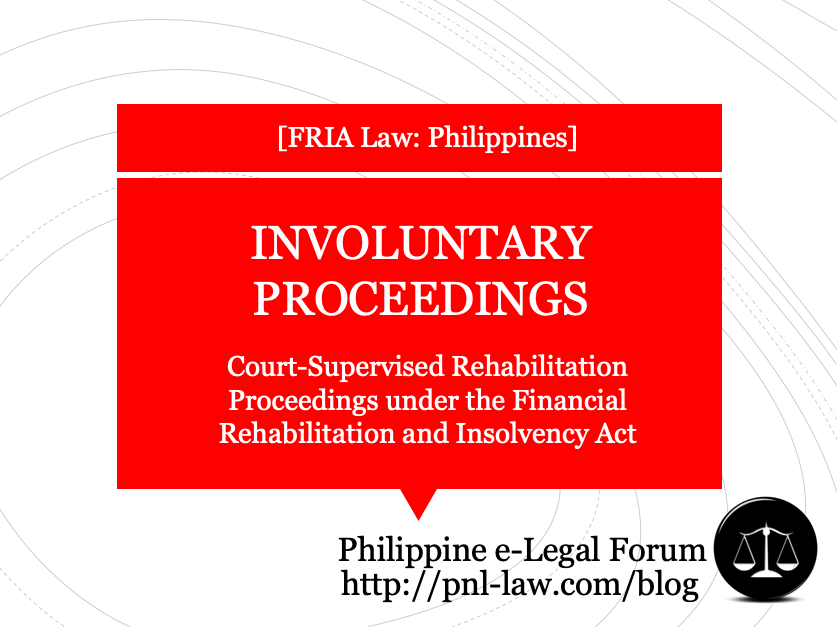Involuntary court-supervised rehabilitation proceedings, as opposed to voluntary court-supervised proceedings, is initiated by the creditors. This is provided under Republic Act No. 10142, also known as the Financial Rehabilitation and Insolvency Act (FRIA) of 2010, as fleshed out in the Financial Rehabilitation Rules of Procedure (2013) or “FR Rules” (A.M. 12-12-11-SC).

WHO MAY INITIATE PROCEEDINGS
Any creditor or group of creditors with a claim of, or the aggregate of whose claims is at least One Million Pesos or at least 25% of the subscribed capital stock or partners’ contributions, whichever is higher, may initiate involuntary proceedings by filing a petition for rehabilitation of a debtor with the court and on the grounds hereinafter specifically provided.
GROUNDS TO INITIATE INVOLUNTARY PROCEEDINGS
Involuntary proceedings may be initiated against the debtor by filing a petition with the court if:
- 1. there is no genuine issue of fact or law on the claim/s of the petitioner/s, and that the due and demandable payments thereon have not been made for at least 60 days; or
- 2. the debtor has failed generally to meet its liabilities as they fall due; or
- 3. at least one creditor, other than the petitioner/s, has initiated foreclosure proceedings against the debtor that will prevent the debtor from paying its debts as they become due or will render it insolvent.
CONTENTS OF THE PETITION FOR INVOLUNTARY PROCEEDINGS
The petition for rehabilitation shall be verified to establish the substantial likelihood that the debtor may be rehabilitated. The petition shall include:
- 1. the name, business, and principal address and other known addresses of the debtor;
- 2. the nature of the business and the principal activities of the debtor;
- 3. the circumstances sufficient to support a petition to initiate involuntary rehabilitation proceedings;
- 4. the specific relief sought;
- 5. a Rehabilitation Plan;
- 6. the names of at least 3 nominees to the position of rehabilitation receiver, as well as their qualifications, office and email addresses;
- 7. the exact address/es at which documents regarding the debtor and the proceedings may be reviewed and copied, if known to the petitioner/s; and
- 8. documents showing that there is substantial likelihood that the debtor may be rehabilitated.
- Extension of Filing Periods and Suspension of Hearings for March 29 to April 4, 2021: SC Administrative Circular No. 14-2021 (Full Text) - March 28, 2021
- ECQ Bubble for NCR, Bulacan, Cavite, Laguna and Rizal: Resolution No. 106-A (Full Text) - March 27, 2021
- Guidelines on the Administration of COVID-19 Vaccines in the Workplaces (Labor Advisory No. 3) - March 12, 2021
